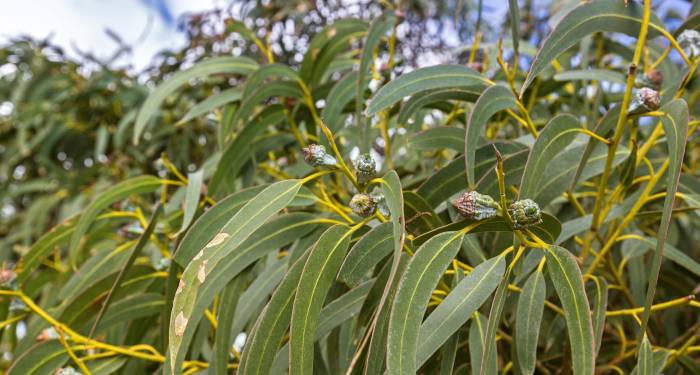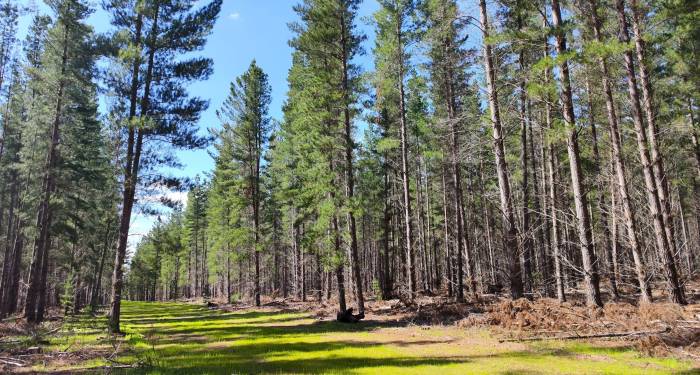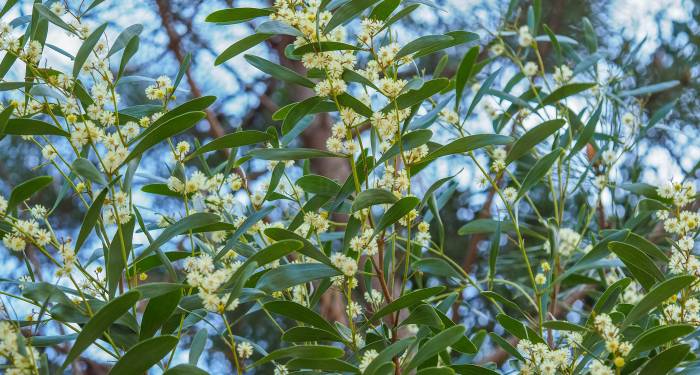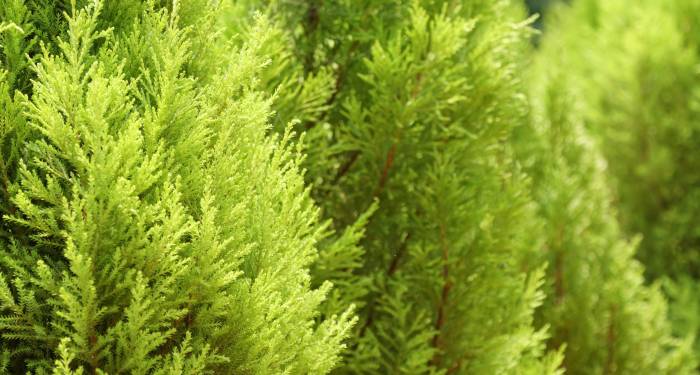Species, sites and planting
Plant the right tree in the right place
Choosing a tree species for your plantation is about finding a match between a tree and its ideal conditions. It should also align with your goals and farming operations.

Take time to understand the needs of your desired tree species and pair it with a site as close to these conditions as possible. Consider the layout and location of your trees, and make an establishment plan to prepare the site for planting.
Leave enough time to plan your plantation, prepare the site and order stock.
Choose a species
The type of tree you plant will depend on your goals, as well as your site conditions and soil.
If your main goal is to grow trees for wood production, a commercial species is right for you. If you want to grow trees for environmental outcomes, a conservation species is likely to be more suitable. Plantations can include a mixture of species to maximise the benefits for you and your farm. There are three main types of tree species to consider
Commercial species
Several commercial species are known to suit Tasmanian conditions and are popular choices for timber production. Each species has its own growth characteristics, wood properties, management requirements and end-uses.

Eucalyptus
(E. nitens and E. globulus)

Radiata Pine
(P. radiata)

Blackwood
(A. melanoxylon)

Cypress
(C. macrocarpa)
Native and conservation species
Native trees and vegetation are valuable assets for farmland and the environment. By planting, protecting or restoring native species, you can encourage biodiversity, create habitat for beneficial wildlife and unlock a range of on-farm benefits.
Alternative species
Alternative species can help farmers to enter high-value, niche wood markets. Many species have been planted on small or experimental sites in Tasmania. If you are interested in growing alternative species on your farm, contact Tree Alliance or find a forester for advice.
Select the right species
Find the ideal species for your site. Search by soil type, vegetation type, uses and region.
Tree Species ListSelect a site
Select a site for your trees by looking at your farm and thinking about where trees will be most useful. For example, you might plant trees for stock shelter, or you could plant trees to activate an unproductive piece of land. Consider how you can integrate trees into the whole of your farm for the best results.
The sites for your plantings should also match your trees' ideal growing conditions. Consider the following factors that influence tree-growth:
- Temperature
- Moisture availability
- Drainage
- Rooting conditions
- Nutrient availability
- Weeds.
If you plan to harvest your trees in the future, you should also consider on-farm access to your plantation site.
Find a checklist and tree species lists to help you choose the best site for your trees:
Site checklist Farming Guides – Tree Species ListConfigurations
There are many options for tree configurations on farms. Consider your goals and available space before deciding on the most appropriate configuration for your property. Many landowners seek the support of a forester during this process, who can help by creating a whole farm plan for your property.
Tree configurations to consider include:

Blocks
Generally larger plantings in areas dedicated to forestry. Blocks are ideal for commercial wood production, but can also be designed to promote other benefits.

Woodlots
Smaller plantings, including in paddock corners and mid-paddock. Woodlots create shelter and wildlife habitat, and can also be used for commercial wood production.

Belts
Rows of trees, usually placed around paddocks. Belts create shelter for stock and crops, and can also be used for commercial wood production.

Riparian
Trees and other vegetation on the banks of farm waterways. Riparian plantings improve water quality, biodiversity, connectivity and habitat.
Learn more about plantation design to decide what is right for you:
14. Tree configurations guidePrepare for planting
Once you have chosen your tree species and site, it's time to prepare for planting. Preparation is a vital step in the process. It will increase the chances your trees surviving and protect the long-term health of your farm's soil. Activities might include:
- Clearing previous vegetation
- Cultivating the soil
- Controlling weeds and pests.
Before starting preparation activities, create an establishment plan to guide your work. Establishment plans usually start 12 to 18 months before planting.
Find guides for your site preparation, including how to develop an establishment plan:
Develop an established plan Farming Guides – Plantation establishment timetable Farming Guides – Plantation establishment summary Farming Guides – Site PreparationOrder stock and plant
Select and order stock as part of your establishment plan. Whether you are ordering potted seedlings, open-rooted seedlings or cuttings, you should:
- Order stock 9–12 months in advance
- Make sure stock has a 90%+ survival rate
- Check if stock is hardened to protect it against weather and browsing.
Some landholders source stock from different nurseries in their early years of planting, to test quality and results.
Generally, planting is scheduled during late winter to mid spring. But this can vary depending on your site's conditions and annual rainfall.
Protect planted stock from browsing pressure and weeds, according to the risks at your site. Then four to eight weeks after planting, conduct survival counts to check progress and whether any replanting is necessary.
Find detailed information on planting and stock selection, including how to conduct survival counts:
Farming Guides – Planting Step by step guide to planting trees Qualities you want in open rooted stock



